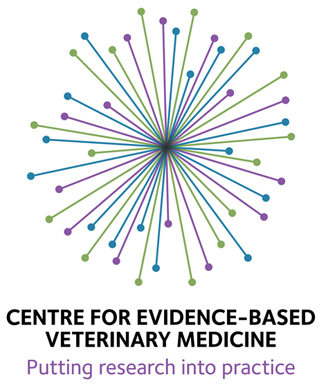A popular therapy among chiropractors who treat pets is low level laser or “cold laser” treatment. It is an impressive bit of showmanship to pull out a complex-looking device and with a serious expression wave a beam of light over a patient, but the evidence to suggest it is anything more than showmanship is weak at best.
An example of the enthusiasm, and irrationality, of some proponents of this treatment can be found at the joint web site of the International Association of Veterinary Chiropractors and American Animal Adjusting Association.
The article on cold laser begins by anticipating and defying criticism:
Invariably a new technique or process is often fraught with counter-intentions that are usually seen throughout the field of study and across the board. The relative benefit of such a process or new technology is directly proportional to the amount of consternation, doubt, and criticism that, it in fact receives….This author has seldom seen a technology as valuable and inspiring, as this particular technology appears to be. Suffice to say you are witnessing the emergence of a completely new age in healing and certainly a total paradigm shift in veterinary health care.
So the existence and strength of opposition to the technique should be seen as evidence of its benefits? Interesting logic. And if I haven’t mentioned it before, the use of the term “paradigm shift,” not to mention “completely new age,” are not only examples of ludicrous hyperbole, they are highly correlated with quackery, if not pathognomonic for it.
The underlying theory presented to explain the benefits of cold laser treatment is a bit of pseudoscience known as the Biophoton or Ultraweak Photon Emission idea. It is possible to detect very low energy photons emitted from living cells as the result of biochemical reactions. The significance, if any, of this for health and disease has never been demonstrated, which makes it a gap in real scientific knowledge into which all kinds of mystical nonsense can be stuffed, much like the pseudoscientific misuse of quantum physics. The veterinary chiropractic site advertising this treatment explains it this way:
It has been proven that cells communicate through coherent light. When a sperm and ovum fertilize, they immediately give off coherent light at precisely 632.8 nanometers.
Cells in the living matrix also communicate throughout the total body living things via a coherent light, and that communication is done instantaneously through the living matrix to direct all aspects of healing, growth, regulation of metabolism, and general cell survival.
To be able to dial into this communication process via an artificial methodology such as a cold laser is the ability to emulate the exact methodology is that the cells themselves use to heal themselves and also to grow, to change, and to survive. It has been said, “it is the way God talks to all cells, tissues, organisms and creatures.”
None of this is based on any sound science. It is merely vitalist, mystical speculation, which does not, of course, limit in any way the certainty and authority with which the fantasy is presented as scientific fact. This is yet another example of how chiropractic is fundamentally a pseudoscience based on imaginary “energy” and fake abnormalities like the “subluxation.” As such, it is open to any similar sounding nonsense, and any benefits it might have in practice are accidental and unrelated to the irrational and bogus underlying principles.
Like most pseudoscientific therapies, cold laser not only addresses the one true underlying cause of disease, it can also be applied in almost any way. Directly over diseased organs, in the general area of a symptom, even on acupuncture points associated with the meridians connected to the problem area. And since the proponents here are chiropractors, we should not be surprised to find that the use of lasers “is particularly effective in rehabilitating the effects of vertebral subluxation complex and their effects on the myofascial tissues affected by these subluxations.”
What else do these folks claim cold laser can do?
These protocols are designed to enhance a particular disease therapy or can be used in a general sense as the sole treatment of choice.
If a practitioner were to master only these protocols and use only these, he would be still far more effective than any of his colleagues to date using methods other than cold laser.
They list a number of general protocols first:
Arthritis/Spondylitis/Myelopathy Protocol
Neuropathy Protocol
Immune Protocol
Lymphatic Drainage Protocol
Pre and Post Surgical Protocol
Liver Detox Protocol
Hormone Balance Protocol
Acute Pain-Injury Protocol
Sympathetic-Parasympathetic (S-PS) Balance Protocol
Acupuncture Meridian Balance Protocol
Infection Protocol
Allergy Protocol (Specific or General)
If one prefers a slightly more specific indication for the treatment, they can also provide protocols for laser treatment of:
Feline-
Abscesses
Chronic Inflammatory Bowel Disease (CIBD)
Feline Hyperthyroidism,
Feline Skin-Spinal Reflex, Feline Neurodermatitis, Endocrine Alopecia, Milliary Eczema
Kidney Disease, FUS, FLUTD
Megacolon
Pyorrhea
Canine-
Canine Hip Dysplasia Syndrome
Canine Idiopathic Epilepsy
Chronic Inflammatory Bowel Disease
Cushing’s Disease
Canine Wobbler’s Disease
Hypothyroid
Progressive Degenerative Myelopathy
Urinary Incontinence
Equine-
Arthritis, (General or Focal) Sore Back etc.
Bleeder (exercise induced naso-pharyngeal hemorrhage) Elevated Blood Pressure
Bronchitis, Bronchopneumonia, Pneumonitis
Bruising, Subcutaneous Hemorrhage, Wound Reorganization
Bursitis
Colic (all kinds), Bloat
Bone Injury, (splint bone and acute boney injuries)
Dermatosis, Urticaria, Hives, Rain Scald
Ear and Guttoral Pouch Disease
Edema, (general, hypostatic, ventral, extremities)
Equine Protozoal Myelitis (EPM)(see also Neurotropic Herpes)
Facial Nerve Paralysis, Lip Paralysis
Fear, Terrors, Miss-emotion, Training Problems
Hepatitis, Hepatosis
Hock Distension
Heart and Heart Related Conditions
Focal or General Inflammation
Lacerations
Lack of Focus in Training
Laryngeal Hemiplegia
Kidney Disease
Malignant Hyperthermia
Navicular Disease and Laminitis
Neurotropic Herpes (West Nile Virus?)
Proud Flesh, Excessive Granulation Tissue
Sepsis, (General or Focal)
So what is the truth behind all of these claims? Despite the nonsense of the underlying theory, is there any evidence cold laser therapy might have real benefits?
The answer for the vast majority of conditions is “No!” For a few conditions, the answer is more appropriately a “Maybe, but probably not much.”
Extensive reviews of the human literature have been done by the Cochrane Collaboration and the insurance companies Aetna and Cigna. These have found mixed but generally poor evidence for benefit as follows. A review of the veterinary literature on the subject can be found in Ramey 2004.
1. Cochrane Review for rheumatoid arthritis: 6 studies with a total of 660 people were examined. There was limited evidence for a small benefit, with an improvement in self-reported pain of 1.1 points on a 10 point scale. The studies were short term and methodologically weak and inconsistent, and the conclusion was, as usual for Cochrane reviews, that no firm conclusion can be drawn and more research is needed.
2. Cochrane Review for osteoarthritis: This examined 6 studies, three of which found no effect and three of which found a benefit. The studies were methodologically weak and inconsistent and more research was recommended. The review has since been withdrawn pending analysis of additional evidence and correction of some statistical errors.
3. Cochrane Review for nonspecific low back pain: 7 studies of 384 people. Three studies (168 people) showed very small improvement in pain compared with fake laser. Three studies (102 people) found no difference. All the studies used different treatment protocols and short-term evaluation, so no firm conclusions could be made.
4. Cochrane Review for tuberculosis: One poor quality study from India was available and did not meet even basic methodological standards, so no conclusion could be drawn.
5. CIGNA Review: References 1-36
A. Musculoskeletal Conditions: A number of studies and reviews in addition to the Cochran Reviews were examined. Generally, they showed no effect from most treatments for most measures but small benefits for a few measures in some trials. Overall, the evidence was weak and of poor quality, and it suggested some small benefit for discomfort and range of motion might be possible.
B. Wound Healing: Several systematic reviews were discussed, none of which showed convincing evidence of benefits for wound healing.
C. Oral Mucositis: Two small studies were reviewed, one of which showed a benefit to laser therapy and the other of which did not.
D. Other Medical Conditions: Reviews of laser use for temperomandibular joint disease and acute and chronic Achilles tendinitis found no clear evidence of benefit.
Summary: Low-level laser therapy (LLLT) has been proposed for a wide variety of uses, including wound healing, tuberculosis, and musculoskeletal conditions such as osteoarthritis, rheumatoid arthritis, fibromyalgia and carpal tunnel syndrome. There is insufficient evidence in the published, peer-reviewed scientific literature to demonstrate that LLLT is effective for these conditions or other medical conditions.
6. Aetna Review: References 37-81 (duplicates with CIGNA deleted)
” Although the results from large, uncontrolled, open trials of low-energy lasers in inducing wound healing have shown benefit, controlled trials have shown little or no benefit. The analgesic effects of low-energy lasers have been most intensely studied in rheumatoid arthritis. Recent well-designed, controlled studies have found no benefit from low energy lasers in relieving pain in rheumatoid arthritis or other musculoskeletal conditions. Furthermore, although positive effects were found in some earlier studies, it was not clear that the pain relief achieved was large enough to have either clinical significance or to replace conventional therapies.”
Published reviews indicate a lack of evidence for effectiveness for the following conditions:
chronic wounds, arthritis, tuberculosis, tinnitus, pain, smoking cessation, epicondylitis, Achilles tendinitis, plantar heel pain, back pain, and carpal tunnel syndrome.
Some evidence of benefit was found for the following conditions:
Raynaud’s phenomenon, pain following endodontic procedures, palpation sensitivity and passive extension in patients with shoulder pain (but not other measures), swelling following dental extraction when used in combination with steroids, tennis elbow pain in combination with plyometric exercise
Most of these studies were small and had methodological weaknesses, an most of their authors conclded that the treatment was promising but more research was needed to conclusively demonstrate a benefit.
7. Ramey 2004: References 82-100
Some studies have found evidence of improved wound healing in diabetic mice, dairy cattle, and laboratory rats. Other studies in rats and rabbits find small but clinically insignificant effects, and several studies have found no evidence of any effect on wounds in rats, guinea pigs, pigs, beagle dogs, and horses. A couple of poor quality studies of tendon and ligament injuries in horses have had conflicting results, one showing benefit and the other not. Other unblinded or uncontrolled studies in horses have suggested benefit for a variety of conditions. “Laser acupuncture” has been examined in uncontrolled and unblinded studies in horses, with the expected claims of benefit. Overall, there is weak evidence to suggest possible benefit in wound healing (though this conflicts with the results of higher quality studies in humans), and many claims made based on studies so poorly designed as to be no different from mere anecdotes. There is no good quality clinical research on which to base firm conclusions, or to support the dramatic claims of laser therapy proponents.
Overall, then, the theoretical foundations for low power laser therapy range from questionable to completely nonsensical pseudoscience. The in vitro research does suggest some real effects on living cells, but it does not indicate that such effects would be achievable or beneficial in actual patients. The human clinical research is extensive but of generally poor quality with no consistency to the laser treatment methods investigated, and it provides only very weak evidence of any clinically meaningful effects. The veterinary research is even more limited and of poor quality, ad it to is mixed with little convincing demonstration of real clinical benefits. All of this suggests an appropriate stance towards this therapy would be neutral to somewhat pessimistic, though certainly better quality research could identify some meaningful clinical benefits. The evidence does not support, and in some cases directly contradicts the claims made by the chiropratic organization website and much of the marketing materials on cold laser therapy veterinarians receive.
References-
1. Arora H, Pai KM, Maiya A, Vidyasagar MS, Rajeev A. Efficacy of He-Ne Laser in the prevention and treatment of radiotherapy-induced oral mucositis in oral cancer patients. Oral Surg Oral Med Oral Pathol Oral Radiol Endod. 2008 Feb;105(2):180-6.
2. Bingol U, Altan L, Yurtkuran M. Low-power laser treatment for shoulder pain. Photomed Laser Surg. 2005 Oct;23(5):459-64.
3. Bjordal JM, Lopes-Martins RA, Joensen J, Couppe C, Ljunggren AE, Stergioulas A, Johnson MI. A systematic review with procedural assessments and meta-analysis of low level laser therapy in lateral elbow tendinopathy (tennis elbow). BMC Musculoskelet Disord. 2008 May 29;9:75.
4. Bjordal JM, Lopes-Martins RA, Iversen VV. A randomised, placebo controlled trial of low level laser therapy for activated Achilles tendinitis with microdialysis measurement of peritendinous prostaglandin E2 concentrations. Br J Sports Med. 2006 Jan;40(1):76-80.
5. Bjordal JM, Couppe C, Chow RT, Tuner J, Ljunggren EA. A systematic review of low level laser therapy with location-specific doses for pain from chronic joint disorders. Aust J Physiother. 2003;49(2):107-16.
6. Bjordal JM, Johnson MI, Lopes-Martins RA, Bogen B, Chow R, Ljunggren AE. Short-term efficacy of physical interventions in osteoarthritic knee pain. A systematic review and meta-analysis of randomised placebo-controlled trials. BMC Musculoskelet Disord. 2007 Jun 22;8:51.
7. Brosseau L, Gam A, Harman K, Morin M, Robinson VA, Shea BJ, et al. Low level laser therapy (Classes I, II and III) for treating osteoarthritis (Cochrane Review). In: The Cochrane Library, Issue 3, 2004.
8. Brosseau L, Robinson V, Wells G, Debie R, Gam A, Harman K, et al. Low level laser therapy (Classes I, II and III) for treating rheumatoid arthritis. Cochrane Database Syst Rev. 2005 Oct 19;(4):CD002049.
9. Brosseau L, Wells G, Marchand S, Gaboury I, Stokes B, Morin M, et al. Randomized controlled trial on low level laser therapy (LLLT) in the treatment of osteoarthritis (OA) of the hand. Lasers Surg Med. 2005
Mar;36(3):210-9.
10. California Technology Assessment Forum (CTAF). Low-energy laser therapy for the treatment of carpal tunnel syndrome. Technology Assessment. San Francisco, CA: CTAF; February 15, 2006. Accessed
June 7, 2009. Available at URL address: http://ctaf.org/content/general/detail/499
11. Chou R, Huffman LH; American Pain Society; American College of Physicians. Nonpharmacologic
therapies for acute and chronic low back pain: a review of the evidence for an American Pain Society/American College of Physicians clinical practice guideline. Ann Intern Med. 2007 Oct 2;147(7):492-504.
12. Chou R, Qaseem A, Snow V, Casey D, Cross JT Jr, Shekelle P, Owens DK; Clinical Efficacy Assessment Subcommittee of the American College of Physicians; American College of Physicians; American Pain Society Low Back Pain Guidelines Panel. Diagnosis and treatment of low back pain: a joint clinical practice guideline from the American College of Physicians and the American Pain Society. Ann Intern Med. 2007 Oct 2;147(7):478-91.
13. Crossley K, Bennell K, Green S, McConnell J. A systematic review of physical interventions for patellofemoral pain syndrome. Clin J Sport Med. 2001 Apr;11(2):103-10.
14. Cullum N, Nelson EA, Flemming K, Sheldon T. Systematic reviews of wound care management: (5) beds; (6) compression; (7) laser therapy, therapeutic ultrasound, electrotherapy and electromagnetic therapy. Health Technol Assess. 2001;5(9):1-221.
15. Djavid GE, Mehrdad R, Ghasemi M, Hasan-Zadeh H, Sotoodeh-Manesh A, Pouryaghoub G. In chronic low back pain, low level laser therapy combined with exercise is more beneficial than exercise alone in the long term: a randomised trial. Aust J Physiother. 2007;53(3):155-60.
16. Ekim A, Armagan O, Tascioglu F, Oner C, Colak M. Effect of low level laser therapy in rheumatoid arthritis patients with carpal tunnel syndrome. Swiss Med Wkly. 2007 Jun 16;137(23-24):347-52
17. Emshoff R, Bösch R, Pümpel E, Schöning H, Strobl H. Low-level laser therapy for treatment of temporomandibular joint pain: a double-blind and placebo-controlled trial. Oral Surg Oral Med Oral Pathol Oral Radiol Endod. 2008 Apr;105(4):452-6.
18. Fikácková H, Dostálová T, Navrátil L, Klaschka J. Effectiveness of low-level laser therapy in temporomandibular joint disorders: a placebo-controlled study. Photomed Laser Surg. 2007 Aug;25(4):297-303.
19. Flemming K, Cullum N . Laser therapy for venous leg ulcers (Cochrane Review). In: The Cochrane Library, Issue 3,2004 .
20. Genot MT, Klastersky J. Low-level laser for prevention and therapy of oral mucositis induced by chemotherapy or radiotherapy. Curr Opin Oncol. 2005 May;17(3):236-40.
21. Gerritsen AA, de Krom MC, Struijs MA, Scholten RJ, de Vet HC, Bouter LM. Conservative treatment options for carpal tunnel syndrome: a systematic review of randomised controlled trials. J Neurol. 2002 Mar;249(3):272-80.
22. Gur A, Karakoc M, Nas K, Cevik R, Sarac J, Demir E. Efficacy of low power laser therapy in fibromyalgia: a single-blind, placebo-controlled trial. Lasers Med Sci. 2002;17(1):57-61.
23. Gur A, Sarac AJ, Cevik R, Altindag O, Sarac S. Efficacy of 904 nm gallium arsenide low level laser therapy in the management of chronic myofascial pain in the neck: a double-blind and randomized controlled trial. Lasers Surg Med. 2004;35(3):229-35.
24. Low Level Laser Therapy (LLLT) Technology Assessment. Washington State Department of Labor and Industries. May 3, 2004. Accessed June 7, 2009. Available at URL address:
http://www.lni.wa.gov/ClaimsIns/Files/OMD/LLLTTechAssessMay032004.pdf
25. Lucas C, van Gemert MJ, de Haan RJ. Efficacy of low-level laser therapy in the management of stage III decubitus ulcers: a prospective, observer-blinded multicentre randomised clinical trial. Lasers Med Sci. 2003;18(2):72-7.
26. Mazzetto MO, Carrasco TG, Bidinelo EF, de Andrade Pizzo RC, Mazzetto RG. Low intensity laser application in temporomandibular disorders: a phase I double-blind study. Cranio. 2007 Jul;25(3):186-92.
27. McLauchlan GJ, Handoll HH. Interventions for treating acute and chronic Achilles tendinitis. Cochrane Database Syst Rev. 2001;(2):CD000232.
28. McNeely ML, Armijo Olivo S, Magee DJ. A systematic review of the effectiveness of physical therapy interventions for temporomandibular disorders. Phys Ther. 2006 May;86(5):710-25.
29. O’Connor D, Marshall S, Massy-Westropp N. Non-surgical treatment (other than steroid injection) for carpal tunnel syndrome. Cochrane Database Syst Rev. 2003;(1):CD003219.
30. Oken O, Kahraman Y, Ayhan F, Canpolat S, Yorgancioglu ZR, Oken OF. The short-term efficacy of laser, brace, and ultrasound treatment in lateral epicondylitis: a prospective, randomized, controlled trial. J Hand Ther. 2008 Jan-Mar;21(1):63-7.
31. Ottawa Panel. Ottawa Panel Evidence-Based Clinical Practice Guidelines for Electrotherapy and Thermotherapy Interventions in the Management of Rheumatoid Arthritis in Adults. Phys Ther. 2004 Nov;84(11):1016-43.
32. Samson DJ, Lefevre F, Aronson N. Wound-Healing Technologies: Low-Level Laser and Vacuum-Assisted Closure. Evidence Report/Technology Assessment No. 111. AHRQ Publication No. 05-E005-2. Rockville, MD: Agency for Healthcare Research and Quality. December 2004. Accessed June 7, 2009. Available at URL address: http://www.ahrq.gov/downloads/pub/evidence/pdf/woundtech/woundtech.pdf
33. Simon A. Technology Assessment. Low level laser therapy for wound healing: an update. Alberta Heritage Foundation for Medical Research, 2004. Accessed June 8, 2009. Available at URL address: http://www.ihe.ca/publications/library/archived/low-level-laser-therapy-for-wound-healing/
34. Vlassov VV, MacLehose HG. Low level laser therapy for treating tuberculosis. Cochrane Database Syst Rev. 2006 Apr 19;(2):CD003490.
35. White AR, Rampes H, Campbell JL. Acupuncture and related interventions for smoking cessation. Cochrane Database Syst Rev. 2006 Jan 25;(1):CD000009.
36. Yousefi-Nooraie R, Schonstein E, Heidari K, Rashidian A, Pennick V , Akbari-Kamrani M, et al. Low level laser therapy for nonspecific low-back pain. Cochrane Database Syst Rev. 2008 Apr 16;(2):CD005107.
37. Basford JR. Low-energy laser therapy: Controversies and new research findings. Lasers Surg Med. 1989;9(1):1-5.
38. Wheeland RG. Clinical uses of lasers in dermatology. Lasers Surg Med. 1995;16(1):2-23.
39. Basford JR. Physical agents. In: Rehabilitation Medicine: Principles and Practice. 2nd ed. JA De Lisa, ed. Philadelphia, PA: J.B. Lippincott Co.; 1993: 404-424.
40. Johannsen F, Hauschild B, Remvig L, et al. Low energy laser therapy in rheumatoid arthritis. Scand J Rheumatol. 1994;23(3):145-147.
41. Heussler JK, Hinchey G, Margiotta E, et al. A double blind randomised trial of low power laser treatment in rheumatoid arthritis. Ann Rheum Dis. 1993;52(10):703-706.
42. Bulow PM, Jensen H, Denneskiold-Samsoe B. Low-power Ga-Al-As laser treatment of painful osteoarthritis of the knee: A double-blind placebo-controlled study. Scand J Rehab Med. 1994;26(3):155-159.
43. Krasheninnikoff M, Ellitsgaard N, Rogvi-Hansen B, et al. No effect of low power laser in lateral epicondylitis. Scand J Rheumatol. 1994;23(5):260-263.
44. Snyder-Mackler L, Bork CE. Effect of helium-neon laser irradiation on peripheral sensory nerve latency. Phys Ther. 1988;68:223-225.
45. Hirschl M, Katzenschlager R, Ammer K, et al. Double-blind, randomised, placebo controlled low level laser therapy study in patients with primary Raynaud’s phenomenon. Vasa. 2002;31(2):91-94.
46. Flemming K, Cullum N. Systematic reviews of wound care management (7): Low-level laser therapy, therapeutic ultrasound, electrotherapy and electromagnetic therapy for the treatment of chronic wounds. Health Technol Assess. 2001;5(9):137-221.
47. Schneider W L, Hailey D. Low level laser therapy for wound healing. Health Technology Assessment. HTA 19. Edmonton, AB: Alberta Heritage Foundation for Medical Research (AHFMR); 1999:1-23.
48. de Bie RA, de Vet HC, Lenssen AF, et al. Low-level laser therapy in ankle sprains: A randomized clinical trial. Arch Phys Med Rehabil. 1998;79(11):1415-1420.
49. Marks R, de Palma F. Clinical efficacy of low power laser therapy in osteoarthritis. Physiother Res Int. 1999;4(2):141-157.
50. Gross AR, Aker PD, Goldsmith CH, et al. Physical medicine modalities for mechanical neck disorders. Cochrane Database Syst Rev. 1998;(2):CD000961.
51. van der Heijden GJ, van der Windt DA, de Winter AF. Physiotherapy for patients with soft tissue shoulder disorders: A systematic review of randomised clinical trials. Br Med J. 1997;315:25-30.
52. Puett DW, Griffin MR. Published trials of nonmedicinal and noninvasive therapies for hip and knee osteoarthritis. Ann Intern Med. 1994;121(2):133-140.
53. Waddell A. Tinnitus. In: BMJ Clinical Evidence. London, UK: BMJ Publishing Group; December 2004.
54. Binder A. Neck pain. In: Clinical Evidence, Issue 7. Tavistock Square, UK; BMJ Publishing Group; June 2002.
55. Landorf KB, Menz HB. Plantar heel pain and plantar fasciitis. In: BMJ Clinical Evidence. London, UK: BMJ Publishing Group; November 2007.
56. C. Shoulder pain. In: BMJ Clinical Evidence. London, UK: BMJ Publishing Group; February 2006.
57. Cullum N, Petherick E. Pressure ulcers. In: BMJ Clinical Evidence. London, UK: BMJ Publishing Group; February 2007.
58. Abdulwadud O. Does laser therapy improve healing and function in patients with tendinitis compared to no treatment? Evidence Centre Evidence Report. Clayton, VIC: Centre for Clinical Effectiveness (CCE); 2001.
59. Alberta Heritage Foundation for Medical Research (AHFMR), Institute of Health Economics. The use of low level laser therapy in wound care in Alberta, Canada: Results of a survey of physical therapists involved in rehabilitation, long term care and home care. Edmonton, AB: AHFMR; 2001.
60. Chapell R, Turkelson CM, Coates V, et al. Diagnosis and treatment of worker-related musculoskeletal disorders of the upper extremity. Evidence Report/Technology Assessment 62. Rockville, MD: AHRQ; 2002.
61. Hirschl M, Katzenschlager R, Francesconi C, Kundi M. Low level laser therapy in primary Raynaud’s phenomenon–results of a placebo controlled, double blind intervention study. J Rheumatol. 2004;31(12):2408-2412.
62. Kreisler MB, Haj HA, Noroozi N, Willershausen B. Efficacy of low level laser therapy in reducing postoperative pain after endodontic surgery — a randomized double blind clinical study. Int J Oral Maxillofac Surg. 2004;33(1):38-41.
63. Ohio Bureau of Workers’ Compensation (BWC). Position paper on low level laser therapy (LLLT). Medical Position Papers. Columbus. OH: Ohio BWC; September 2004.
64. Wang G. Low level laser therapy (LLLT). Technology Assessment. Olympia, WA: Washington State Department of Labor and Industries, Office of the Medical Director; May 3, 2004. Available at: http://www.lni.wa.gov/ClaimsIns/Providers/Treatment/TechAssess/default.asp. Accessed June 8, 2005.
65. Green S, Buchbinder R, Hetrick S. Physiotherapy interventions for shoulder pain. Cochrane Database Syst Rev. 2003;(2):CD004258.
66. Nelson EA, Jones J. Venous leg ulcers. In: BMJ Clinical Evidence. London, UK: BMJ Publishing Group; September 2007.
67. Altan L, Bingol U, Aykac M, Yurtkuran M. Investigation of the effect of GaAs laser therapy on cervical myofascial pain syndrome. Rheumatol Int. 2005;25(1):23-27.
68. Posten W, Wrone DA, Dover JS, et al. Low-level laser therapy for wound healing: mechanism and efficacy. Dermatol Surg. 2005;31(3):334-340.
69. White AR, Rampes H, Campbell JL. Acupuncture and related interventions for smoking cessation. Cochrane Database Syst Rev. 2006;(1):CD000009.
70. Markovic A, Todorovic Lj. Effectiveness of dexamethasone and low-power laser in minimizing oedema after third molar surgery: A clinical trial. Int J Oral Maxillofac Surg. 2007;36(3):226-229.
71. Ziganshina L, Garner P. Tuberculosis (HIV negative people). In: BMJ Clinical Evidence. London, UK: BMJ Publishing Group; July 2008.
72. Crawford F, Thomson C. Interventions for treating plantar heel pain. Cochrane Database Syst Rev. 2003;(3):CD000416.
73. Brosseau L, Robinson V, Wells G, et al. Low level laser therapy (Classes III) for treating osteoarthritis. Cochrane Database Syst Rev. 2007;(1):CD002046.
74. Vlassov VV, MacLehose HG. Low level laser therapy for treating tuberculosis. Cochrane Database Syst Rev. 2006;(2):CD003490.
75. BC Cancer Agency. Lymphedema. Patient/Public Information. Vancouver, BC: BC Cancer Agency; revised November 2007.
76. Kaviani A, Fateh M, Yousefi Nooraie R, et al. Low-level laser therapy in management of postmastectomy lymphedema. Lasers Med Sci. 2006;21(2):90-94.
77. Carati CJ, Anderson SN, Gannon BJ, Piller NB. Treatment of postmastectomy lymphedema with low-level laser therapy: A double blind, placebo-controlled trial. Cancer. 2003; 98(6):1114-1122.
78. Moseley AL, Carati CJ, Piller NB. A systematic review of common conservative therapies for arm lymphoedema secondary to breast cancer treatment. Ann Oncol. 2007;18(4):639-646.
79. L, Mouraux A. EEG and laser stimulation as tools for pain research. Curr Opin Investig Drugs. 2005;6(1):58-64.
80. Stergioulas A. Effects of low-level laser and plyometric exercises in the treatment of lateral epicondylitis. Photomed Laser Surg. 2007;25(3):205-213.
81. Reddy M, Gill SS, Kalkar SR, et al. Treatment of pressure ulcers: A systematic review. JAMA. 2008;300(22):2647-266282. Ramey DW, Rollin BE. Complementary and alternative veterinary medicine considered. Ames (IA), USA: Iowa State Press; 2004. p. 156-163.
83. Yu W, Naim JO, Lanzafame RJ. Effects of photostimulation on wound healing in diabetic mice. Lasers Surg Med. 1997;20(1):56-63.
84. Ghamsari SM, Taguchi K, Abe N, Acorda JA, Sato M, Yamada H. Evaluation of low level laser therapy on primary healing of experimentally induced full thickness teat wounds in dairy cattle. Vet Surg. 1997 Mar-Apr;26(2):114-20.
85. Kami T. The experimental effect of low-energy laser on skin flap survival. Plast Reconstr Surg. 1992 Dec;90(6):1127-8.
86. Medrado AR, Pugliese LS, Reis SR, Andrade ZA. Influence of low level laser therapy on wound healing and its biological action upon myofibroblasts. Lasers Surg Med. 2003;32(3):239-44.
87. Braverman B, McCarthy RJ, Ivankovich AD, Forde DE, Overfield M, Bapna MS. Effect of helium-neon and infrared laser irradiation on wound healing in rabbits. Lasers Surg Med. 1989;9(1):50-8.
88. Surinchak JS, Alago ML, Bellamy RF, Stuck BE, Belkin M. Effects of low-level energy lasers on the healing of full-thickness skin defects. Lasers Surg Med. 1983;2(3):267-74.
89. Becker J. Biostimulation of wound healing in rats by combined soft and middle power lasers. Biomed Tech (berl) 1990;35(5):98-101 [in German]
90. Hutschenreiter G, Haina D, Paulini K, Schumacher G. [Wound healing after laser and red light irradiation] Z Exp Chir. 1980 Apr;13(2):75-85. [in German]
91. McCaughan JS Jr, Bethel BH, Johnston T, Janssen W. Effect of low-dose argon irradiation on rate of wound closure. Lasers Surg Med. 1985;5(6):607-14.
92. Basford JR, Hallman HO, Sheffield CG, Mackey GL. Comparison of cold-quartz ultraviolet, low-energy laser, and occlusion in wound healing in a swine model. Arch Phys Med Rehabil. 1986 Mar;67(3):151-4.
93. In de Braekt MM. et al. Effect of low level laser therapy on wound healing after palatal surgery in beagle dogs. Lasers Surg Med 1991;11(5):462-70.
94. Peteson SL, et al. The effect of low level laser therapy (LLLT) on wound healing in horses. Equine Vet J 1999;31(3):228-31.
95. Kaneps AJ, Hultgren BD, Riebold TW, Shires GM. Laser therapy in the horse: histopathologic response. Am J Vet Res. 1984 Mar;45(3):581-2.
96. Marr CM, Love S, Boyd JS, McKellar Q. Factors affecting the clinical outcome of injuries to the superficial digital flexor tendon in National Hunt and point-to-point racehorses. Vet Rec. 1993 May 8;132(19):476-9.
97. Gomez-Villamandos RJ, et al. He-Ne laser therapy by fibroendoscopy in the mucosa of the equine upper airway. Lasers Surg med 19995;16(2):184-88.
98. McKibbin LS, Paraschak D. Use of laser light to treat certain lesions in standardbreds. Mod Vet Pract. 1984 Mar;65(3):210-3.
99. Martin BB Jr, Klide AM. Treatment of chronic back pain in horses. Stimulation of acupuncture points with a low powered infrared laser. Vet Surg. 1987 Jan-Feb;16(1):106-10.
100. Klide AM, Martin BB Jr. Methods of stimulating acupuncture points for treatment of chronic back pain in horses. J Am Vet Med Assoc. 1989 Nov 15;195(10):1375-9.










